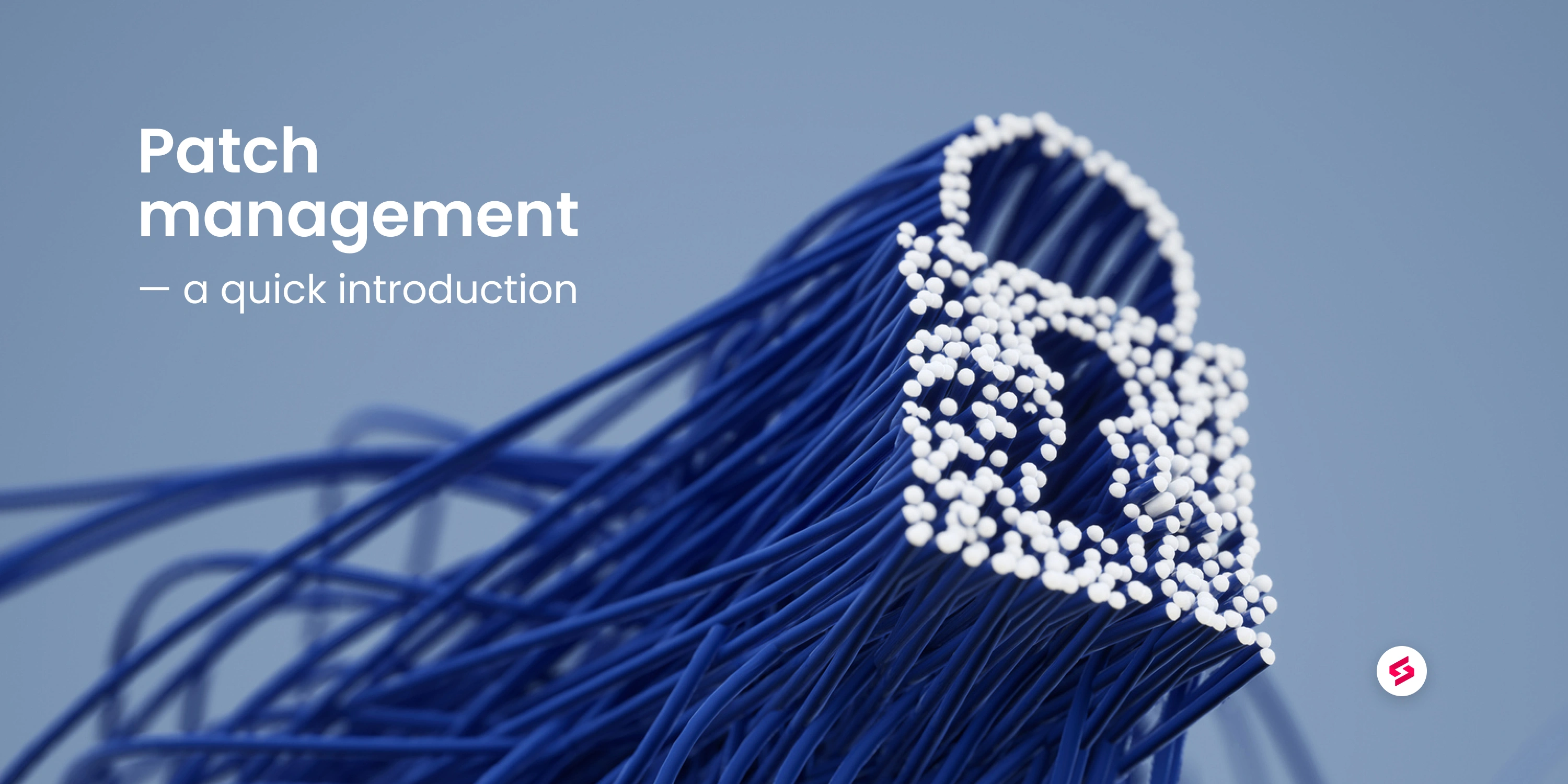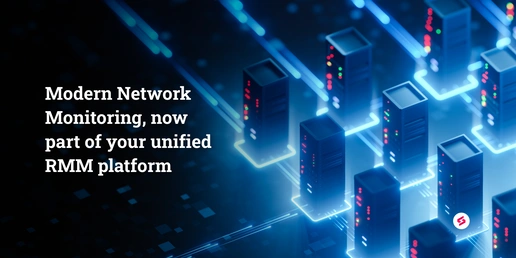A patch is a change to existing software, usually to improve usability and security. It plays an important role in increasing a software product’s longevity and ensures that the product lives up to current standards. Patch management makes the deployment of patches easier.
What is patch management?
Patch management refers to the process of adding codes to an already existing software. These patches help users prevent instances of bugs as well as security vulnerabilities in the software. It is an important tool for managed services providers as many businesses hire an MSP to take care of their various IT needs, including patches.

If something didn’t work and you called tech support, the first thing they wanted to know was whether you were using the latest version.
Michael Goldstein President of LAN Infotech |
Some of the most common types of software that require timely patches are operating systems and professional applications. Constant patches ensure the software’s well-being and make sure the software is safe from the latest definitions of virus and security threats.
Patch Management: why is it important?
Patch management benefits your MSP’s tech infrastructure in a multitude of ways:
Security and risk mitigation
With respect to the increasing frequency of ransomware and other cybersecurity attacks in recent years, companies cannot afford to have any vulnerability or hole in their software. In 2020, over 18,000 security vulnerabilities were reported across the world. Add to that news of ransomware and other significant cybersecurity breaches, security mitigation became a cause of concern for all IT organizations.
Patches to software take care of these security vulnerabilities. A patch management system monitors the patch status of all workstations and allows you to deploy patches accordingly or automate the patching process.
System uptime
The cost of downtime is high — on average IT downtimes cost $5600 per minute, eventually reaching figures like $300,000 per hour. Nobody wants that. Bugs and internal errors within a software’s coding often cause downtimes.
Patch updates also contribute to your software’s bug and error management. They fix existing problems within the software script and improve the functionality of the software, thereby reducing the chances of downtime due to internal errors and bugs.
Compliance
Compliance is an important aspect of patch management. Patch compliance pertains to the number of devices in your organization that have been patched to the latest standards. Regulatory bodies have their own compliance rules and guidelines. Organizations need to adhere to these standards.
Having a patch management system in place can ensure that your devices are compliant by keeping an account of the success and reach of your patch deployment efforts. Superops.ai is GDPR compliant. Important compliance examples:
- GDPR compliance: European Union — No residual data is to be left in servers
- HIPAA compliance: Medical industry — Focuses on the protection of sensitive patient data
Constant updates
Patch management ensures that the software you are using is always up to date and meets the latest security standards. Our patch management system monitors software versions, ensuring you are always in the loop. Outdated software is a security hazard and can be vulnerable to breaches.
Patch management features
Powerful monitoring tool
A strong monitoring tool makes it easier for you to manage endpoints. Our patch management system provides you with a comprehensive overview of software that’s updated and software that requires urgent updates, pinned down to every device and client. Moreover, with our patch management system, you can sort, filter and deploy bulk updates.
Automate patch deployment
Deploying patches has never been more convenient. Our patch management system lets you use a matrix of configurable policies to automate patch deployment. You can schedule scans to discover missing patches, identify new patch releases, deploy approved patches, set up reboot options based on user activity, and trigger approvals based on patch category or severity.
Custom task creation and automation
You can create custom policies for every client and every device. You also have the freedom to add conditions and actions to the policies. It also lets you create reusable policies that help simplify the patch management process and automate it. Our custom policy set can be sorted on the basis of client, site, and asset.
Patch sourcing
Our patch sourcing constantly works in tandem with the windows update agent to make sure you have all the patch intelligence at your disposal. With our patch management system, you are ready to deploy as new patches are released.
Cross-platform patch management
With cross-platform compatibility, you can manage patching and configuration updates across multiple operating systems and devices from a single platform. Unlike the olden days of IT when Windows was the bread and butter, macOS and Linux have also found a place in IT infrastructure. So it only makes sense that your patch management system lets you deploy patches across operating systems, ensuring complete safety and efficiency.
Reporting
Reporting is the next step after successful patch deployment. Patch management software makes use of patching intelligence to come up with a report that acts as a summary or overview of patch status. It provides comprehensive information on errors, vulnerabilities, or other problems that may have occurred during deployment.
Patch management: best practices
Inventory management
It is important to maintain an inventory of your IT assets. The assets can be categorized by device type, operating system, software version, hardware. An updated inventory will also help you consolidate software versions. Using different versions of the same software can be problematic on multiple levels (compatibility, security, patching). A practice of keeping a single optimized version of the software as standard across all devices will be beneficial in the long run.
Risk level assignment
Assigning risk level or severity ratings helps you prioritize your patch deployment order by defining which systems require immediate patch deployment and which can wait. This works in tandem with a functional inventory. You can assign risk levels to assets based on categories to determine which patches need urgent attention and which can wait.
The Federal Trade Commission (FTC) recommends patching priority in the following order:
- Security software
- Operating system software
- Internet browsers and apps
Automated patch deployment
Automating patch deployment ensures that all of your organization’s endpoints are up-to-date. It helps with productivity and drastically reduces the margin of error. It simplifies the deployment process and removes the need for any manual intervention.
Defined patch management policy
A defined patch management policy lets you establish a well-documented step-by-step process around patching. This enables the effective deployment of patches.
Hire an MSP if you don’t have an in-house IT team
MSPs have expertise in IT solutions and that includes patch management. Hiring an MSP means that they will take care of your patch management requirements. This includes patch compliance, testing, inventory management, and deployment. An MSP can also act as an IT consultant and can help you strategize your business outcomes.
Consistency with vendor patch announcements
Developers and researchers in vendor companies consistently work to fix bugs and vulnerabilities in their applications. They come up with patches to remediate these issues. They inform the users about the availability of these patches through security update emails. One surefire way to not miss any of this information is to subscribe to the security update emails from all the vendors in your organization’s software portfolio.
Test the waters: trial running patches before deployment
Deploying new patches the second they’re available is not advisable. Sometimes, patches can have issues and vulnerabilities that need to be sorted out. This is why it’s always a good idea to test the patches first before proceeding with deployment. Try out the patch in one device, and depending on how the software reacts, decide if the patch is deployable.
In conclusion
Having a patch management system in place means that your organization will always be in possession of the latest and the best. With all your software meeting the security compliance requirements, you can work in comfort knowing that your devices meet all the legal requirements and your applications are safe from security threats. It makes for mental peace and a generally secure environment for your employees. With constant updates, downtimes are going to be a rarity. That automatically pushes up your organization’s productivity in spades.
With Superops.ai, we have redefined the patch management system and equipped it with features that will enrich your organization’s productivity.





